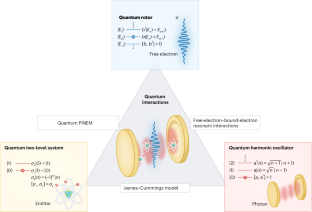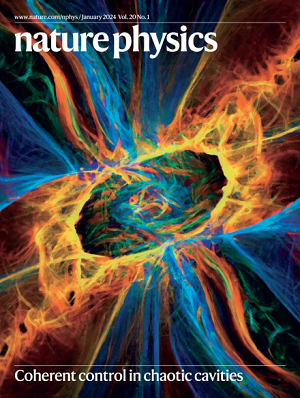自由电子量子光学
IF 17.6
1区 物理与天体物理
Q1 PHYSICS, MULTIDISCIPLINARY
引用次数: 0
摘要
近年来在理论和实验方面的突破,已经引起了自由电子量子光学的新兴领域,重塑了对自由电子物理学的理解。传统上植根于经典电动力学,这个领域现在揭示了量子力学的特征,这需要量子电动力学和量子光学的框架。这种转变迫使人们重新评估已确立的领域,将量子力学修正引入加速器科学和电子辐射现象。同时,塑造单电子波函数的能力为显微镜和光谱学开辟了新的可能性。这些发展主要是由电子显微镜的创新及其与激光科学的交叉所驱动的,激光驱动的电子调制实质上影响了量子电子与光和物质的相互作用。在这一展望中,我们回顾了这些发展,突出了当前的挑战和未来的机遇。我们探索了自由电子作为量子资源的作用,补充了传统的两能级系统和谐波振荡器。在未来几年,自由电子可能为在超快时间尺度上读写量子信息、执行量子态层析成像和原子尺度上的超快量子门提供新的模式。本文章由计算机程序翻译,如有差异,请以英文原文为准。


Free-electron quantum optics
Recent theoretical and experimental breakthroughs have given rise to the emerging field of free-electron quantum optics, reshaping the understanding of free-electron physics. Traditionally rooted in classical electrodynamics, this field now reveals quantum-mechanical features that necessitate the frameworks of quantum electrodynamics and quantum optics. This shift compels a re-evaluation of well-established areas, bringing quantum-mechanical corrections to accelerator science and to electron-radiation phenomena. Simultaneously, the ability to shape single-electron wavefunctions opens new possibilities in microscopy and spectroscopy. These developments are primarily driven by innovations in electron microscopy and its intersection with laser science, where laser-driven electron modulation substantially influences quantum electron interactions with light and matter. In this Perspective, we review these developments, highlighting the current challenges and future opportunities. We explore the role of the free electron as a quantum resource, complementing conventional two-level systems and harmonic oscillators. In the coming years, free electrons may offer new modalities for reading and writing quantum information on ultrafast timescales, performing quantum-state tomography, and ultrafast quantum gates on the atomic scale. Free-electron quantum optics is an emerging field that requires a quantum-mechanical description of both the electronic and the optical contributions. This Perspective summarizes recent developments and discusses challenges and opportunities.
求助全文
通过发布文献求助,成功后即可免费获取论文全文。
去求助
来源期刊

Nature Physics
物理-物理:综合
CiteScore
30.40
自引率
2.00%
发文量
349
审稿时长
4-8 weeks
期刊介绍:
Nature Physics is dedicated to publishing top-tier original research in physics with a fair and rigorous review process. It provides high visibility and access to a broad readership, maintaining high standards in copy editing and production, ensuring rapid publication, and maintaining independence from academic societies and other vested interests.
The journal presents two main research paper formats: Letters and Articles. Alongside primary research, Nature Physics serves as a central source for valuable information within the physics community through Review Articles, News & Views, Research Highlights covering crucial developments across the physics literature, Commentaries, Book Reviews, and Correspondence.
 求助内容:
求助内容: 应助结果提醒方式:
应助结果提醒方式:


